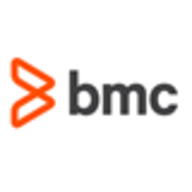

Control-M and MuleSoft Anypoint Platform compete in workload automation and API management markets, respectively. MuleSoft appears to have an edge due to its robust API management, while Control-M excels in comprehensive workload automation.
Features: Control-M offers cross-platform job scheduling, automated error handling, and detailed reporting utilities. MuleSoft Anypoint Platform boasts API management, cloud-native tools, and a broad range of connectors.
Room for Improvement: Control-M could enhance its reporting capabilities and cost efficiency. MuleSoft may improve its runtime management, technical support, and licensing model.
Ease of Deployment and Customer Service: Control-M supports on-premises, hybrid, and cloud deployments with strong technical support. However, it may have a complex setup. MuleSoft offers cloud and hybrid deployment with proactive customer service, but some users find it costly and complex.
Pricing and ROI: Control-M has a task-based licensing model considered costly yet justified by its features, delivering significant ROI for larger enterprises. MuleSoft’s volume-based pricing can be a barrier for smaller businesses, though it offers substantial value in API management.
The main return on investment with Helix Control-M has been a reduction in downtime and minimization of manual interventions, which has improved our operational efficiency.
You can run a million batch jobs or tasks at night when all of your highly skilled people are at home sleeping.
By implementing automation tools, you can minimize human errors and improve efficiency.
They quickly evolve with changing technology trends, easily adopt new features, and incorporate them into the product.
The technical support is very polite, helpful, and available 24/7.
If something fails at 3 AM in the morning, you need to fix it and get it back up and working really quickly.
The Salesforce team offers different levels of support.
The support team is responsive and helpful.
Our license doesn't limit our ability to configure Control-M as needed, allowing us to easily create new agents or environments.
It can absorb more workload wherever needed.
As the workload on Control-M increases, its scalability is much higher.
MuleSoft Anypoint Platform is quite scalable, and it meets our use cases with no issues preventing implementation.
MuleSoft provides the ability to scale, yet it is costly to do so.
The downtime is higher compared to AWS.
The testing and development phases need to be more rigorous before releasing patches.
Once properly implemented, the system becomes very stable, which is one of its strongest attributes.
They could provide more documentation and tutorials to make the initial setup easier to understand.
We've experienced main problems with MFTE where having one setup means when an error occurs, the entire service goes down.
Documentation should be maintained for all versions since they provided the application.
MuleSoft is considered expensive, so pricing is a major concern.
When dealing with multiple transactions or trading, the system can lose control, and tracking becomes hectic.
Currently, it uses other standards, but adopting OpenAPI, the standard in the market, would be beneficial.
The licensing cost is very high, and they often consider switching to IBM Workload Scheduler or other options.
Control-M tends to be more expensive compared to other solutions, but users get great value from it.
Control-M is among the highest-priced solutions in the market.
MuleSoft is considered one of the more expensive products in the market.
I do not know the specific costs, but given that it is part of MuleSoft, I suspect it is not cheap.
The platform reduces manual workload in maintaining infrastructure, but it does come with some cost considerations.
Automation is more advanced, deployment is fast, and version control has been simplified.
The user interface is comprehensive and lets me view all my jobs on one page, monitor everything, and access the job history.
It is easy to integrate Control-M with technologies for data ops or DevOps processes as things change, and it is not complex compared to other workload automation tools available in the market.
The most valuable feature is the full lifecycle management, including Anypoint Designer and Exchange, as well as Discofolio API.
The platform is integrated with Salesforce, making it preferable when using Salesforce products.
MuleSoft Anypoint Platform helps to standardize data integration approaches, making it easier to implement integration projects.
| Product | Market Share (%) |
|---|---|
| Control-M | 18.9% |
| MuleSoft Anypoint Platform | 6.3% |
| Other | 74.8% |


| Company Size | Count |
|---|---|
| Small Business | 26 |
| Midsize Enterprise | 12 |
| Large Enterprise | 113 |
| Company Size | Count |
|---|---|
| Small Business | 21 |
| Midsize Enterprise | 12 |
| Large Enterprise | 29 |
Control-M by BMC is engineered to manage hybrid cloud workflows, offering orchestration capabilities starting at $29,000 annually. Aimed at helping growing teams, it efficiently supports cross-environment scheduling and automation needs.
Control-M offers robust cross-platform scheduling, automation, and integration with applications such as SAP and Informatica. Users appreciate its ease of use with a graphical interface, centralized management, and monitoring capabilities. Advanced features, including Managed File Transfer, automated error handling, and real-time alerts, enhance productivity. The ability to unify workflows and support diverse environments makes Control-M a trusted tool in many sectors. While improvements in reporting flexibility and API integration with tools like ServiceNow are needed, addressing performance issues during upgrades could enhance its value. Offering improved support for new technologies and cloud environments is beneficial, with cost-effectiveness being a consideration.
What are the key features of Control-M?Control-M is leveraged in industries like finance for enterprise scheduling and data management, supporting mainframe, Linux, Unix, Windows, and cloud platforms. It contributes to workflow orchestration and workload automation, improving operational efficiency and enhancing IT infrastructure across those environments.
MuleSoft Anypoint Platform provides API management and integration capabilities with scalability, ensuring seamless connectivity across systems.
MuleSoft Anypoint Platform offers API management and integration capabilities within a user-friendly interface. With a range of connectors and the ability to handle integration patterns, it enables data integration across environments with support for API-led connectivity. High scalability, observability, batch processing, and tooling are key features, enhancing performance while simplifying deployment.
What are the standout features of MuleSoft Anypoint Platform?MuleSoft Anypoint Platform is employed by organizations for API management and seamless integration across systems in industries like retail and e-commerce. It connects enterprise applications in environments such as SAP and Salesforce. Users leverage it for data transformation and synchronization, achieving efficient real-time processing and a middleware layer across systems.
We monitor all Workload Automation reviews to prevent fraudulent reviews and keep review quality high. We do not post reviews by company employees or direct competitors. We validate each review for authenticity via cross-reference with LinkedIn, and personal follow-up with the reviewer when necessary.